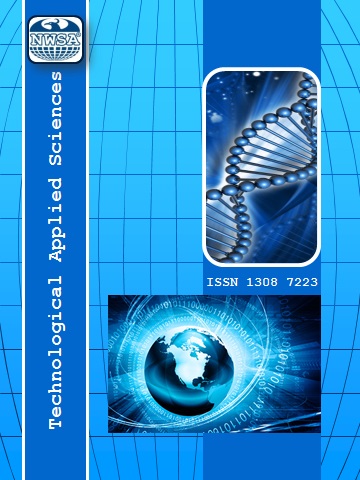References
[1] Gluchowski, W., Rdzawski, Z., Sobota, J., and Domagala-Dubiel, J., (2016). Effect of the combined heat treatment and severe plastc deformation on the microstructure of CuNiSi alloy. Archives of metallurgy and materials, 61.
[2] Buytoz, S., Kilic, M., and Carboga, C., (2022). Microstructure and wear behaviour of Ni-based/TiC composite coating. International Journal of Surface Science and Engineering, 16(1):71-90.
[3] Bahador, A., Umeda, J., Hamzah, E., Yusof, F., Li, X., and Kondoh, K., (2020). Synergistic strengthening mechanisms of copper matrix composites with TiO2 nanoparticles. Materials Science and Engineering: A, 772:138797.
[4] Cug, H., Demirtas, H., Erden, M.A., Akgul, Y., Turan, M.E., and Zengin, O., (2019). Influence of nano-WC addition on wear performances of CuNi matrix nanocomposites. Acta Physica Polonica A, 135(5):892-894.
[5] Ahn, J.H., Han, S.Z., Choi, E.A., Lee, H., Lim, S.H., Lee, J., and Han, H.N., (2020). The effect of bimodal structure with nanofibers and normal precipitates on the mechanical and electrical properties of CuNiSi alloy. Materials Characterization, 170:110642.
[6] Özorak, C., Tabonah, T.M.K., and Akkaş, M., (2023). Production of CuNiSi Composites by Powder Metallurgy Method: Effects of Ti on the microstructural and corrosion properties. European Journal of Technique (EJT), 13(2):88-93.
[7] Yang, H., Ma, Z., Lei, C., Meng, L., Fang, Y., Liu, J., and Wang, H., (2020). High strength and high conductivity Cu alloys: A review. Science China Technological Sciences, 63(12):2505-2517.
[8] Imak, A., Kilic, M., and Kirik, I., (2023). Production of Ni-Co-bronze composites with different tic composition by hot pressing. Science of Sintering, 55(2):7-7.
[9] Caligulu, U., Durmus, H., Akkas, M., and Sahin, B., (2021). Microstructure and mechanical properties of Ni matrix B4C reinforced functionally graded composites. Science of Sintering, 53(4):475-484.
[10] Akkaş, M., (2022). Synthesis and characterization of MoSi2 particle reinforced AlCuMg composites by molten salt shielded method. Türk Doğa ve Fen Dergisi, 11(4):11-17.
[11] Wei, H., Chen, Y., Li, Z., Shan, Q., Yu, W., and Tang, D., (2021). Microstructure evolution and dislocation strengthening mechanism of CuNiCoSi alloy. Materials Science and Engineering: A, 826, 142023.
[12] Kılıç, M., (2021). Microstructural characterization of ni-Based B4c reinforced composite coating produced By tungsten inert gas Method. Archives of Metallurgy and Materials, 66(3):917-924.
[13] Elkilani, R.H.R., Çuğ, H., and Erden, A.M., (2023). The effects of hot rolling process on mechanical properties, corrosion resistance, and microstructures of Mo-Ni alloyed steels produced by powder metallurgy. Science of Sintering, 1-26.
[14] Akkaş, M. and Elfghi, A.M.A., (2022). TiB2 parçacık takviyeli alcumg kompozitlerin üretilebilirliğinin araştırılması. Uluslararası Doğu Anadolu Fen Mühendislik ve Tasarım Dergisi, 4(2):118-128.
[15] Strzepek, P. and Zasadzinska, M., (2022). Pure alloy additive or preliminary alloy: A comparative study on obtaining high-strength copper magnesium alloys designed for electrical power systems. Energies, 15(6):2093.
[16] Çalıgülü, U., Kaçmış, M.V., Karabacak, A.H., Çanakçı, A., and Özkaya, S., (2023). Investigation of corrosion resistance and impact performance properties of Al2O3/SiC-doped aluminium-based composites. Bulletin of Materials Science, 46(3):156.
[17] Nwaeju, C.C., Edoziuno, F.O., Adediran, A.A., Nnuka, E.E., and Adesina, O.S., (2021). Structural and properties evolution of coppernickel (CuNi) alloys: A review of the effects of alloying materials. Matériaux et Techniques, 109(2):1-10.
[18] Tsai, C.W., Hou, P.Y., Lin, W.S., Shen, P.K., Huang, H.H., Yeh, J.W., Huang, C.Y., (2022). Precipitates-Strengthened Cu-Ni-Si-Fe Conductive Copper Alloy. Available at SSRN 4142000.
[19] Akkaş, M., Boushiha, K.F.I., and Tabonah, T.M.K., (2021). Toz metalurjisi yöntemi ile WC Takviyeli CuNiSi kompozitlerin üretimi ve karakterizasyonu. İmalat Teknolojileri ve Uygulamaları, 2(1):41-48.
[20] Deng, L., Chen, T., Yang, J., Liu, F., Zhang, Q., Zheng, Z., Xu, C., and Song, Z., (2022). Evolutions in precipitates, microstructure and properties of cold-worked CuNiCoSi alloy during short-time solid solution. Materials Today Communications, 30:103150.
[21] Jayan, V. and Radhika, N., (2020). Taguchis technique in optimization of process parameters on wear behaviour of Cu/Si3N4 metal matrix composite. Materials Today: Proceedings, 24:1052-1063.
 +90(535) 849 84 68
+90(535) 849 84 68 nwsa.akademi@hotmail.com
nwsa.akademi@hotmail.com Fırat Akademi Samsun-Türkiye
Fırat Akademi Samsun-Türkiye
